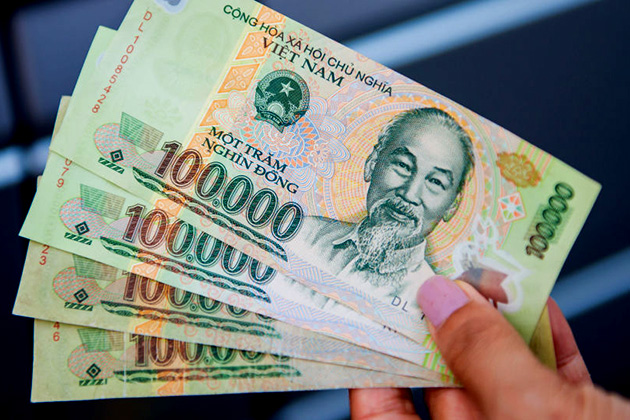

The new coins, minted by the Mint of Finland, were in denominations of 200, 500, 1,000, 2,000, and 5,000 dong in either nickel-clad steel or brass-clad steel. The State Bank of Vietnam resumed issuing coins on December 17, 2003. Second dong Commemorative issues Ĭommemorative coins in copper, brass, copper-nickel, silver, and gold have been issued since 1986, but none of these have ever been used in circulation. For table standards, see the coin specification table. These images are to scale at 2.5 pixels per millimetre. Due to the chronic inflation experienced by Vietnam during the 1980s and 1990s, these coins lost all their relevant value and no coins were circulated for many years after this series. The coins were minted by the Berlin Mint in the German Democratic Republic and bear the state crest on the obverse and denomination on the reverse. In 1978, aluminium coins dated 1976 were introduced in denominations of 1, 2 and 5 hao, as well as 1 dong. Coins įor the earlier modern Vietnamese coins, see North Vietnamese đồng and South Vietnamese đồng. Despite the inflation rates having stabilised as part of the Đổi Mới reforms, especially during the 1990s and early 2000s, the effects of the crisis still last in the value of the dong, one of the lowest in the world today. To aggravate this problem, the government banned all forms of non-state-owned internal trade, which they believed to be capitalistic, resulting in an economic crisis so severe that Tố Hữu referred to it as a "vertical downturn". For example, in 1986, the price of agricultural products increased by 2000% compared to ten years before. At that time, Vietnamese economists believed that revaluing the currency would increase its value, but it turned out to have the opposite effect: savings of many people were wiped out, the currency experienced unprecedently heavy inflation that peaked at 774.7% in 1986 and prices skyrocketed.

On 14 September 1985, the dong was revalued again, with one new dong worth 10 old dong.

One new dong equalled one Northern dong or 0.8 Southern "liberation" dong. On 22 September 1975, after the fall of Saigon, the currency in South Vietnam was changed to a "liberation dong" worth 500 old Southern dong.Īfter Vietnam was reunified, the dong was also unified on. Notes dually denominated in piastres and dong were issued in 1953 for the State of Vietnam, which evolved into South Vietnam in 1954. South Vietnam 500 dong banknote issued in 1966. The term "hao" is a loanword from the Chinese háo ( Chinese: 毫), meaning a tenth of a currency unit, while "xu" came from French sou. The term refers to bronze coins used in feudal China and Vietnam. The word "dong" came from the material which the pennies were made (bronze). Generally, Vietnam is moving towards digital payments.Īs of December 2022, the Vietnamese dong was the third-lowest valued currency unit (behind the Venezuelan bolivar and Iranian rial), with one United States dollar equalling around 23,575 dong. The Vietnamese dong has increasingly moved towards exclusively using banknotes, with lower denominations printed on paper and denominations over 10,000 dong, worth about 40¢ dollar or euro, printed on polymer, as of 2022 no coins are used. The dong was also the currency of the predecessor states of North Vietnam and South Vietnam, having replaced the previously used French Indochinese piastre.įormerly, it was subdivided into 10 hao ( hào), which were further subdivided into 10 xu, neither of which are now used due to inflation. It is issued by the State Bank of Vietnam. The dong ( Vietnamese: đồng, Chữ Nôm: 銅) ( / d ɒ ŋ/ Vietnamese: sign: ₫ or informally đ in Vietnamese code: VND) has been the currency of Vietnam since. The language(s) of this currency do(es) not have a morphological plural distinction.īoth subunits are obsolete due to inflation and have been unused in Vietnam for several decadesġ,000, 2,000, 5,000, 10,000, 20,000, 50,000, 100,000, 200,000, 500,000 dong For other uses, see VND (disambiguation).


 0 kommentar(er)
0 kommentar(er)
